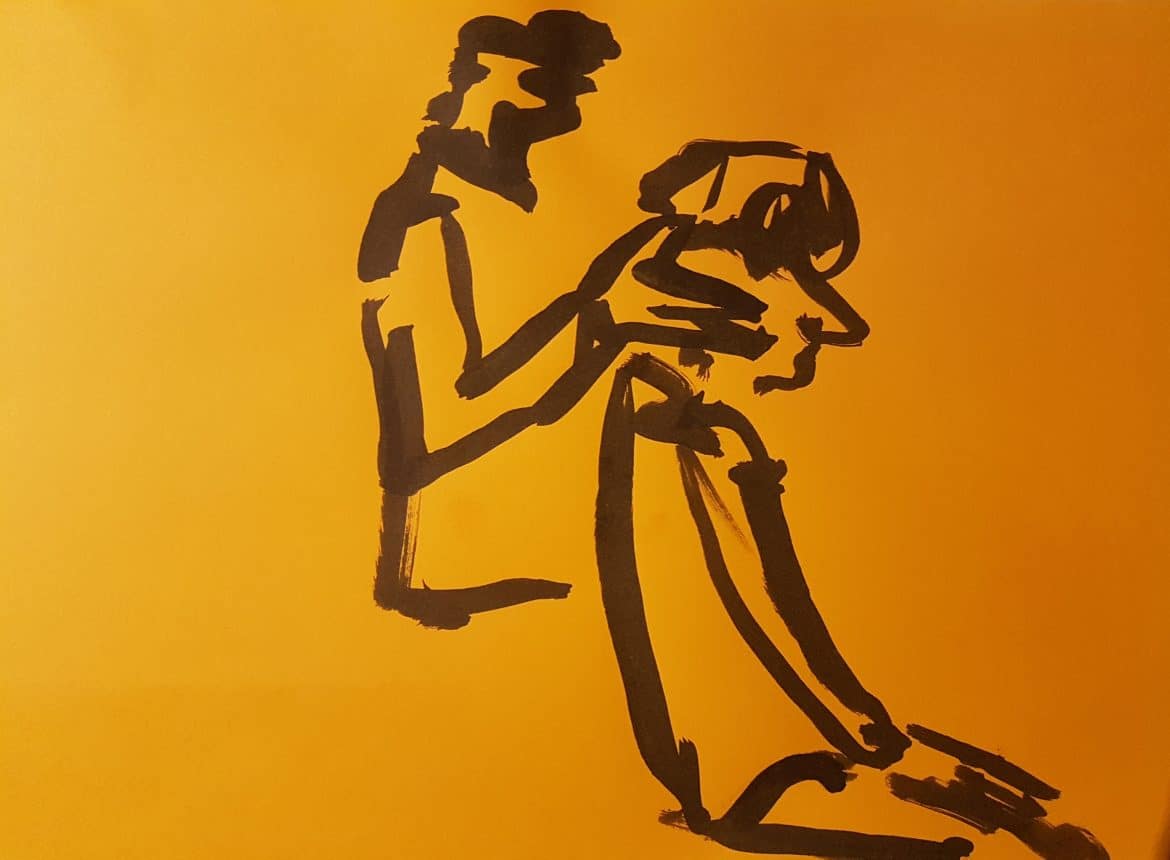A definite goal in the Alexander Technique, achieved by means of non-doing or ‘inhibition and direction’, is letting our head go forward and up. On dry land this means letting it go where it wants to go, where nature intended, up out of the body. This sets off a whole series of changes which bring more ease and freedom.
Habit, and our compulsion to do, causes us to lose ‘forward and up’ as quickly as we’ve found it. In AT work we practise letting our head go where it really wants to and, once we’ve allowed this, we try to stop pulling ourselves down. It’s a lifelong journey!
The difficulty with letting our head go forward and up is that we can’t ‘do’ it. We have to wish to allow it, or ‘think’ it. Anything we try to do has the opposite effect. So we tend to carry on pulling it into our body.
Letting your head go in the water is easier because the water supports it, or at least it never resists it. If you let your head sink, for most people it doesn’t sink far below the surface. Nobody’s head sinks like a stone. Explore the buoyancy of your head.
We can’t be free until we stop pulling our head into our body. This means allowing separation of the head from the neck. This is what the Alexander Technique direction ‘neck free’ is about.
In the water, as on land, we can’t let our head go without letting it be separate from our neck. So at the level of the roof of the mouth, where the skull joins the spine, let it go from there. Look at the floor. Look at the fish.
Most people never experience ‘head forward and up’ beyond childhood. In the water few people really enjoy letting the head go but it is more straightforward: just give your head to the water!
If you get into water and achieve that, you’ve done yourself the most good you can do in it, I suggest.
Swimming can mean, for me it does mean, creating some movement whilst continuing to enjoy this freedom of head and neck.
But it never takes much doing, in or out of the water, to lose any freedom we’ve found. So it’s useful to ask ourselves, ‘Where, after I had that moment of quietness, did it go wrong?’
Try working to the principle in water of finding freedom in your head and neck then, without too much ambition, seeing how much you can add, with arms and legs, to create a bit of forward movement.
But do keep asking, At which point did I forget to enjoy the freedom of my head in the water, in its separateness from my neck? At which point, in other words, did I tighten my neck? How could I have prevented this?… Where did it all go wrong?


